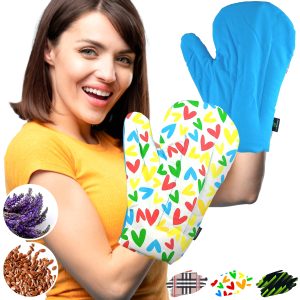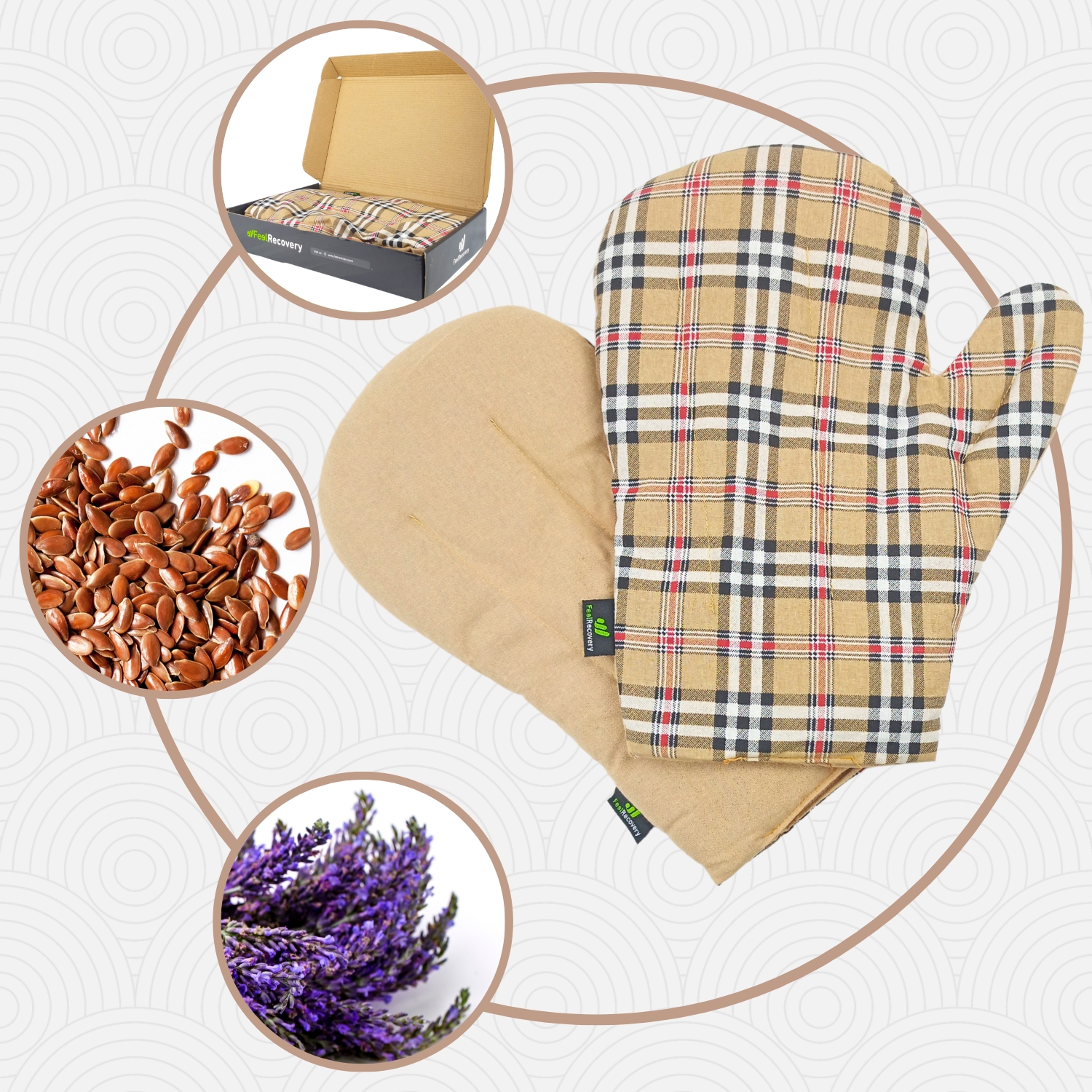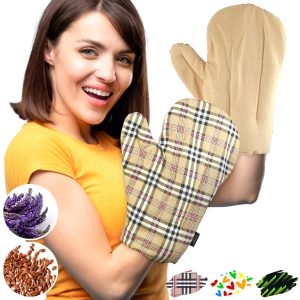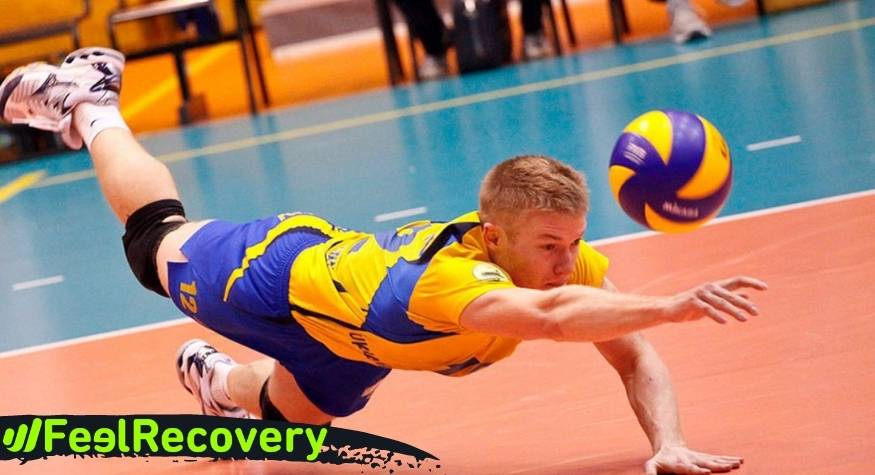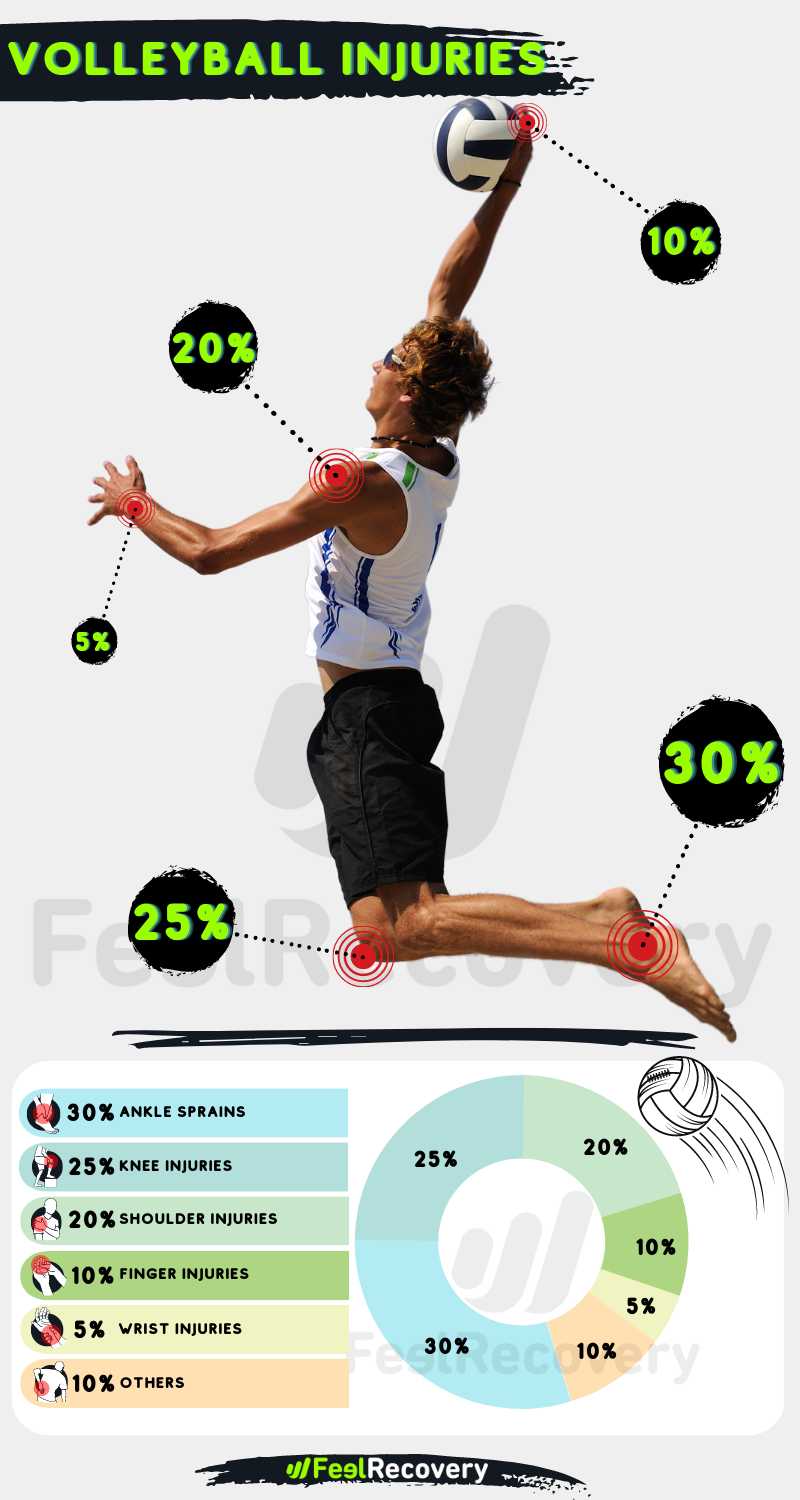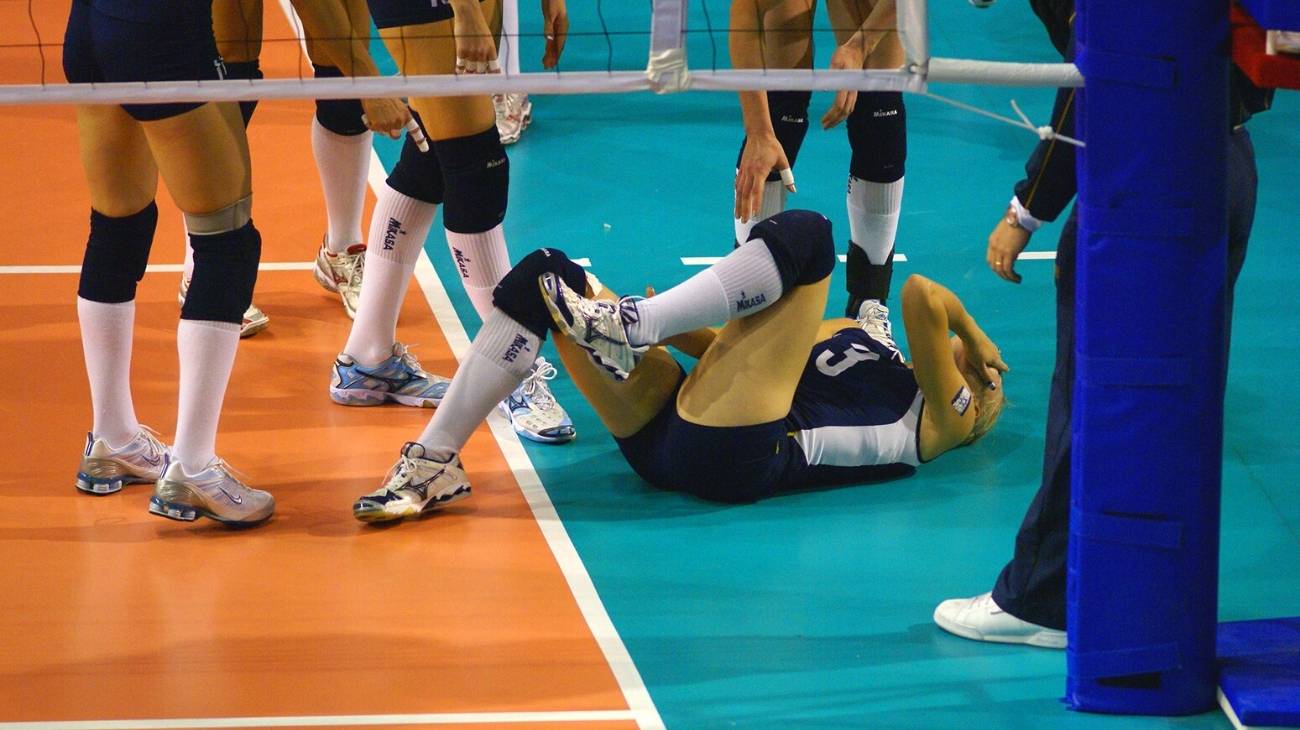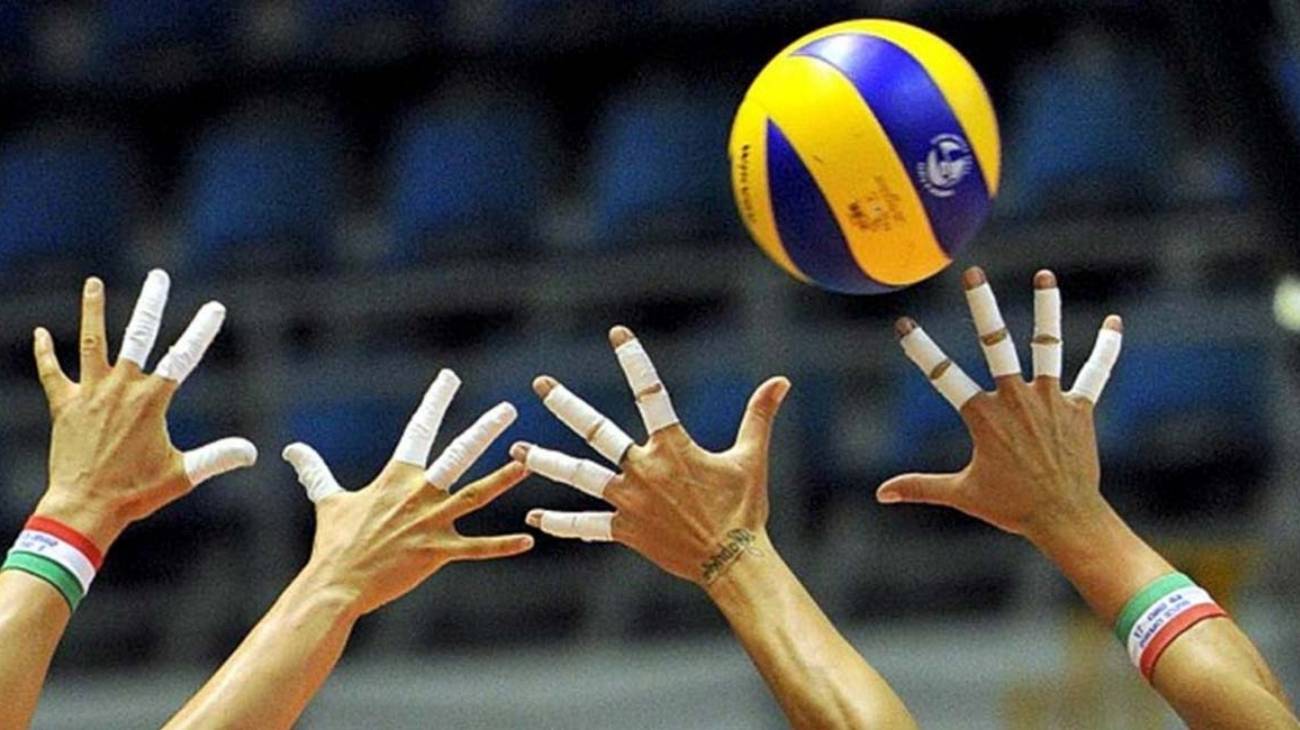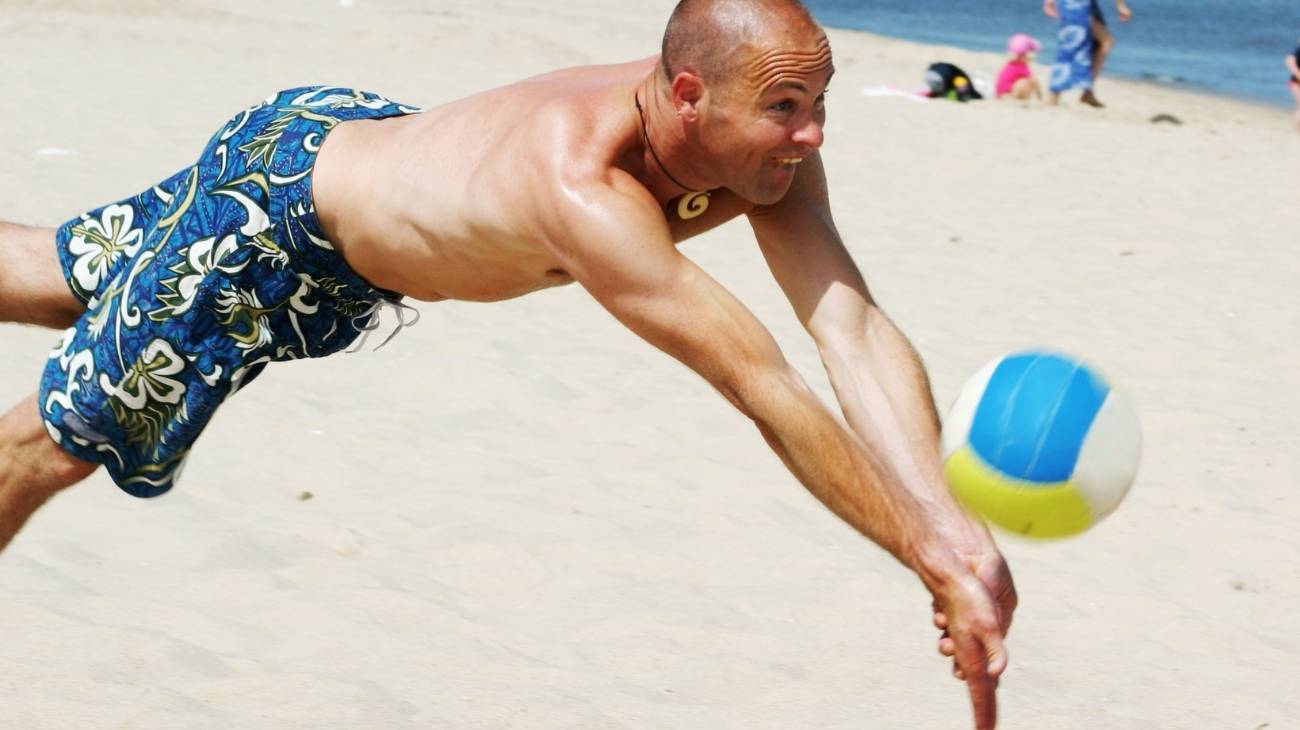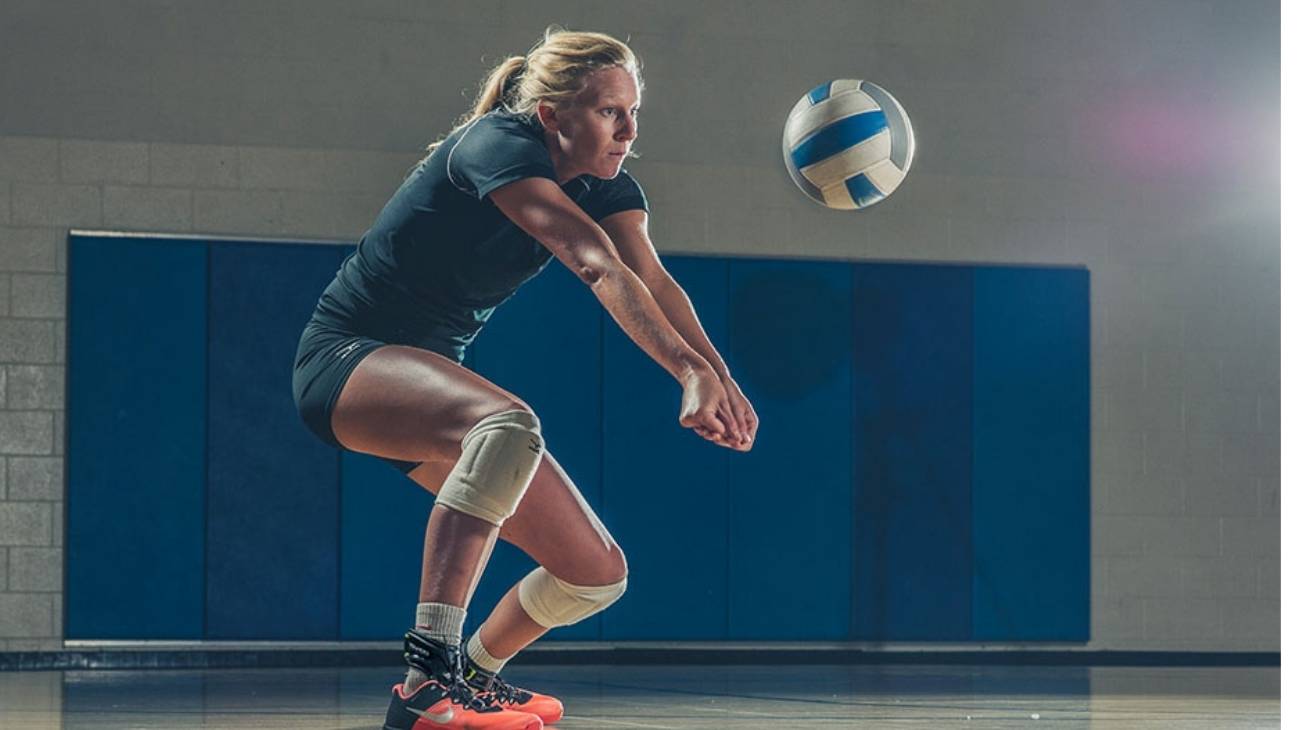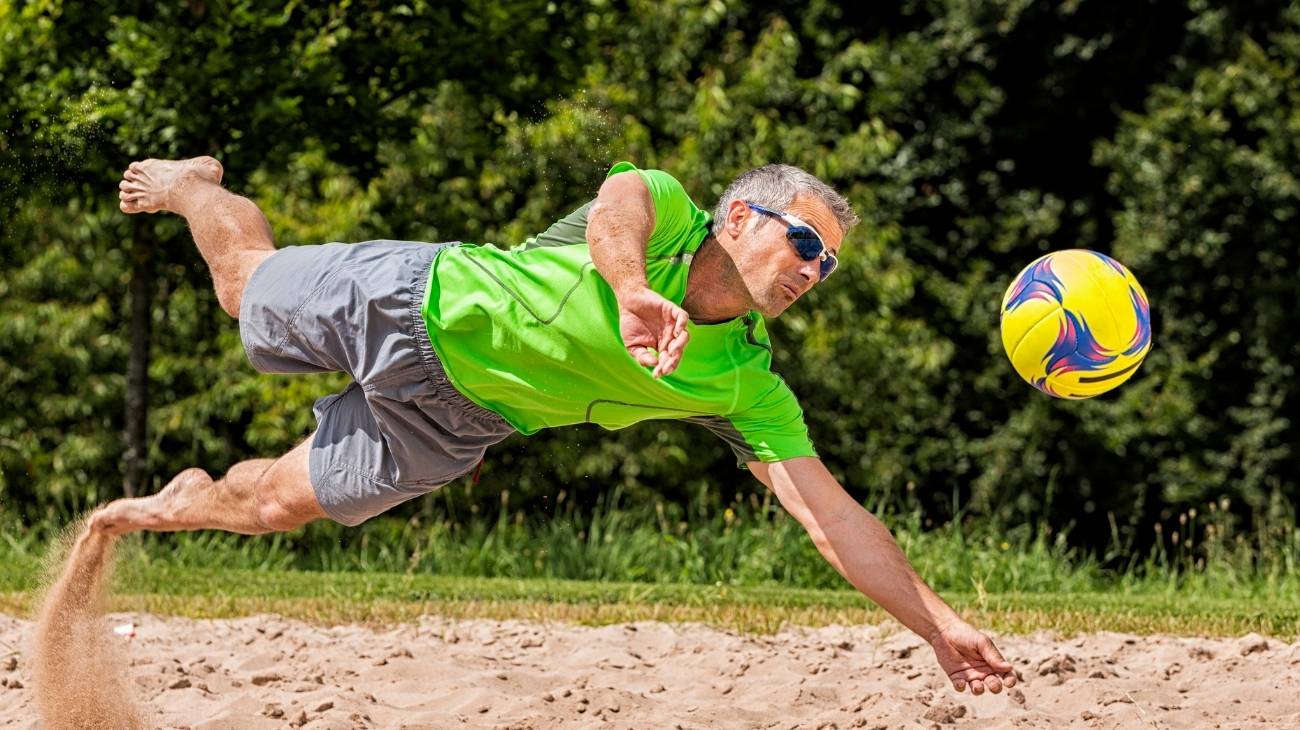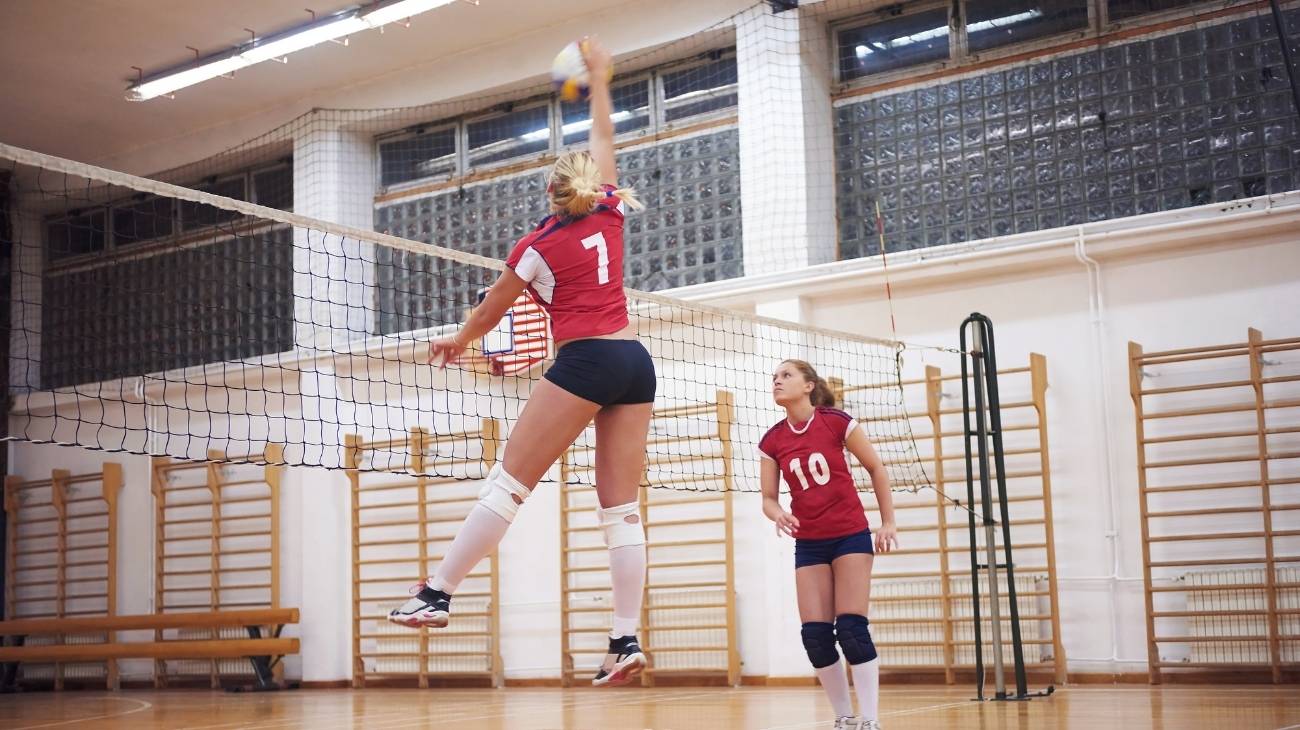- What are the most common types of injuries when playing volleyball?
- Best products for volleyball injury recovery
- How to prevent injuries when playing volleyball?
- How to apply the RICE therapy to treat first aid injuries in volleyball players?
- When should we see a specialist for the treatment of injuries in volleyball players?
Volleyball is a sport that is characterised by its collective nature and has won many fans all over the world. As it is an activity with a variety of movements and powerful displacements where injuries to the upper and lower limbs and spine tend to appear. It is a sport that can be practised in different natural environments such as the beach or on artificial courts.
The main cause of injuries is due to overloading of the shoulders, toes, knees and ankles. In the following we will tell you about the main injuries that occur in volleyball and how to prevent them. Also, you will learn about the RICE therapy which consists of techniques for emergency care of sports injuries.
What are the most common types of injuries when playing volleyball?
Volleyball involves a variety of repetitive movements that can lead to sports injuries when not properly prepared. It is a very physically demanding sport and requires powerful body mechanics to reach the ball. Generally, the joints of the shoulders, fingers, knees, ankles and spine are affected. For this reason, it is important to know how they are generated, how to prevent and treat them.
Here are the most common injuries that players can suffer while playing volleyball:
Rotator cuff tendinitis
Rotator cuff injuries are very common in volleyball. It represents one of the essential parts of the human body for generating force and moving the shoulder when throwing the ball. The player performs repetitive overhead movements when serving, blocking partial or total tears in the muscles.
This results in inflammation and fatigue which athletes describe as a deep pain in the shoulder. This makes it difficult to perform actions that involve lifting the upper limb, such as combing the hair or trying to touch the back. In addition, there is a lot of weakness in the arms.
SLAP lesion
This is a partial or complete tear of the labrum fibrocartilage and is named after its abbreviation "Superior Labrum Anterior to Posterior". This fibrocartilage covers the glenoid cavity to seat and support the humeral head and increase the stability of the joint.
It is caused by falls on the shoulder in abduction, extension and slight flexion or by repeated throwing movements. It is classified into 4 types depending on the level of tear in the labrum. It causes severe pain in the shoulder, especially when raising the arm, as well as popping, weakness and instability.
Shoulder impingement
This is a shoulder joint impingement syndrome that is usually multifactorial. The impingement is the pinching of the soft tissues, resulting in supraspinatus tendonitis, bursitis and tendonitis of the shoulder. The main causes of this injury are due to calcifications or bone spurs, capsular tension and rotator cuff weakness. Associated symptoms include shoulder pain with overhead movement and stiffness.
Wrist sprain
Although not a very common injury in volleyball sports players, it can occur. It is commonly known as "open wrist" and actually represents the straining, tearing or rupture of the wrist ligaments.
These are caused by overuse and high intensity training, direct trauma to the joint or falls on the joint. As a result, they cause pain, swelling and difficulty in moving the wrist joint.
Fractures, dislocations and finger sprains
The fingers are another of the most vulnerable parts of the hand in volleyball players. In general, injuries are caused by strong blows of the ball on the fingertips. This is due to the weakness and sensitivity of the fingers when serving, blocking and spiking.
This can lead to fractures, dislocations and injuries to the ligaments and tendons of the fingers. Players can tell when they experience severe pain, inability to move them, enlargement and deformity.
Ankle sprain
Ankle sprains are a very common injury in volleyball players and are the main cause of disability. They usually occur when the athlete jumps and falls incorrectly, losing the stability of the foot. Also, due to an accidental fall on the foot of another player causing a loss of balance.
Sprains are classified into 3 grades depending on the severity of the injury. A grade I sprain is mild, with no tear or rupture of the ligaments; grade II has torn ligaments. And grade III is much more serious because it presents total tearing of the ligaments and its resolution is surgical.
Patellar tendonitis
It is a pathology that occurs in sports where activities such as repetitive jumping must be performed. In the case of volleyball, it is generated when volleyball players perform spiking and blocking movements.
It appears as an accentuated inflammation at the level of the tendon that connects the tibia with the patella. It causes intense pain at the level of the knee in the area above or below the kneecap. In addition, it is accompanied by decreased muscle strength in the quadriceps femoris muscle.
Anterior cruciate ligament rupture
This injury is also one of the most common lower limb injuries in volleyball players. It occurs when players jump hard and land on their outstretched feet. As a result, it produces a loud audible popping sound, accompanied by intense pain, increased volume and inability to bend over or sit down. Once the injury has occurred, there is no likelihood that it will resolve naturally. The only way to treat this injury is by surgical reconstruction.
Achilles tendinitis
Achilles tendon tendonitis is an inflammation of the Achilles tendon, which is a fibrous structure that connects the muscles of the leg to the foot. It results from overuse of the calf muscles in volleyball players who practice intensively on weekends. This can lead to inflammation and partial or complete tears at the tendon level.
It is typical for players to start with mild pain in the back of the leg after training. However, after several weeks it can become more severe with stiffness in the mornings and inability to perform daily activities.
Plantar fasciitis
Plantar fasciitis is an inflammation of the thick band of tissue that covers the sole of the foot called the plantar fascia. It occurs in volleyball players due to repeated jumping movements and not wearing the correct footwear in practice. This is due to the tension and stress placed on the fascia which can lead to inflammation and partial or complete tears. Volleyball players often report a shooting pain in the ball of the foot, especially on waking, which improves with daily activities. However, it may worsen after sports practice.
Lumbar spine pain
Lumbar spine injuries are the main cause of chronic low back pain in volleyball players. They are due to inflammation in the lumbar ligaments and muscles, as well as compression of the spinal nerves and discs. These injuries are caused by sudden twisting of the trunk and hyperextension of the vertebrae backwards.
They also cause intense pain in the lower back that radiates to the buttocks and legs. This can lead to numbness and weakness in the affected leg and is specifically due to inflammation of the sciatic nerve.
Muscle contractures and tears
Muscle contractures and muscle tears can occur very frequently in volleyball players. Muscle contractures and tears are caused by a decrease in blood flow to the muscles, muscle overload, water and electrolyte imbalance or trauma. This often occurs when warm-up, cool-down and stretching exercises are not performed.
They generate pain at the level of the affected muscles with the presence of a lump that is due to the shortening of the muscle fibres. This shortening is involuntary and when the shortening generates much more tension, a tearing of the muscle fibres can occur.
Fractures
Bone fractures represent one of the most serious injuries in volleyball players. They can occur due to strong impacts on the upper limbs, lower limbs and even the spine. They are caused by a loud crunching or snapping sound that is accompanied by severe pain. In addition, it causes enlargement, deformity and inability to move the injured area.
Best products for volleyball injury recovery
Bestseller
-
2 Ankle Compression Sleeve (Black/Gray)
$19.95 -
2 Ankle Compression Sleeve (Green/Navy)
$19.95 -
2 Ankle Compression Sleeve (Pink/Bordeaux)
$19.95 -
2 Calf Compression Sleeve (Black/Gray)
$19.95 -
2 Calf Compression Sleeve (Green/Navy)
$19.95 -
2 Calf Compression Sleeve (Pink/Bordeaux)
$19.95 -
2 Knee Compression Sleeve (Black/Gray)
$19.95 -
2 Knee Compression Sleeve (Green/Navy)
$19.95 -
2 Knee Compression Sleeve (Pink/Bordeaux)
$19.95 -
2 Patella Knee Strap (Black/Gray)
$14.95 -
2 Patella Knee Strap (Green/Navy)
$14.95 -
2 Patella Knee Strap (Pink/Bordeaux)
$14.95 -
2 Thigh Compression Sleeve (Black/Gray)
$19.95 -
2 Thigh Compression Sleeve (Green/Navy)
$19.95 -
2 Thigh Compression Sleeve (Pink/Bordeaux)
$19.95 -
Acupressure Mat and Pillow (Black/Gray)
$49.95 -
Acupressure Mat and Pillow (Green/Navy)
$49.95 -
Acupressure Mat and Pillow (Pink/Bordeaux)
$49.95 -
Acupressure Pillow (Black/Gray)
$29.46 -
Acupressure Pillow (Green/Navy)
$29.46 -
Acupressure Pillow (Pink/Bordeaux)
$29.46 -
Foot Massage Roller for Plantar Fasciitis (Black)
$19.95 -
Foot Massage Roller for Plantar Fasciitis (Green)
$19.95 -
Foot Massage Roller for Plantar Fasciitis (Pink)
$19.95 -
High Density Foam Roller for Muscle (Black/Gray)
$29.95 -
High Density Foam Roller for Muscle (Green/Navy)
$29.95 -
High Density Foam Roller for Muscle (Pink/Bordeaux)
$29.95 -
Ice Massage Roller Ball (Black)
$39.95 -
Ice Massage Roller Ball (Green)
$39.95 -
Ice Massage Roller Ball (Pink)
$39.95 -
Microwave Arthritis Gloves (2 Mittens) (Hearts)
$29.95 -
Microwave Arthritis Gloves (2 Mittens) (Oxford)
$29.95 -
Microwaveable Heating Pad for Pain Relief (Hearts)
$19.95 -
Microwaveable Heating Pad for Pain Relief (Oxford)
$19.95 -
Microwaveable Heating Pad for Pain Relief (Sport)
$19.95 -
Pack 2 In 1 Foam Roller High + Soft Density (Black/Gray)
$29.95 -
Pack 2 In 1 Foam Roller High + Soft Density (Green/Navy)
$29.95 -
Pack 2 In 1 Foam Roller High + Soft Density (Pink/Bordeaux)
$29.95 -
Shoulder Support Brace (Black)
$24.95 -
Shoulder Support Brace (Green)
$24.95 -
Shoulder Support Brace (Pink)
$24.95 -
Soft Density Foam Roller for Recovery (Black)
$29.95 -
Soft Density Foam Roller for Recovery (Green)
$29.95 -
Soft Density Foam Roller for Recovery (Pink)
$29.95 -
Sport Compression Socks (1 Pair) (Black/Gray)
$19.95 -
Sport Compression Socks (1 Pair) (Green/Navy)
$19.95 -
Sport Compression Socks (1 Pair) (Pink/Bordeaux)
$19.95 -
Trigger Point Massage Stick (Black)
$14.95 -
Trigger Point Massage Stick (Green)
$14.95 -
Trigger Point Massage Stick (Pink)
$14.95 -
Wrist Brace (Black/Gray)
$19.95 -
Wrist Brace (Green/Navy)
$19.95 -
Wrist Brace (Pink/Bordeaux)
$19.95
How to prevent injuries when playing volleyball?
Injuries in volleyball are often an unavoidable risk in spite of the fact that volleyball is a safe sport. Volleyball players are at risk of suffering injuries to shoulders, fingers, knees, ankles and spine. That is why some considerations should be taken into account in terms of fitness, proper technique and the following recommendations:
Warm-up
Warming up is the basis of all training in any sport. In the case of volleyball, it is essential to avoid the appearance of moderate and serious injuries that compromise the performance of the athlete.
In the volleyball warm-up, a series of specific exercises should be performed to prepare the athlete's body. This stage should be for approximately 15 to 20 minutes, however, it will increase if the practice or match exceeds 60 minutes.
Here are some of the routines you can follow:
- Fast jogging: Jogging is an activity that allows you to increase your heart rate to provide more blood flow to your muscles. This ensures better oxygenation at the start of the sport and should be done for at least 5 minutes. The jogging should increase in intensity to strengthen the player's endurance.
- Routines to increase endurance: After jogging it is necessary to start a routine to increase the endurance of the athlete for 5 more minutes. Jumping exercises, running, small obstacles, displacements with changes of direction and agility and coordination circuits should be combined.
- Stretching: Stretching is an important part of the warm-up in volleyball. They favour muscular elasticity and flexibility and prevent the appearance of muscular contractures. Among the most recommended are those aimed at joint mobility at the shoulders, elbows, wrists, knees and ankles. Also, the muscles of the upper limbs, lower limbs and back should be stretched.
Cooling
Cool-down exercises correspond to the set of activities that are carried out to lower the intensity of training. They are performed after any physical training or match. Their importance lies in returning and restoring the body to its normal neuromuscular and metabolic states. Relaxation and breathing techniques should be applied to help loosen the upper and lower limbs and the back.
The way to cool down in volleyball is very simple:
- Walking: Walking serves to decrease muscle activity and should be accompanied by deep breathing. Three gentle walks around the court should be done, making gentle movements with the arms. Then three slow walks without any type of movement.
Gentle stretching: The session should end with another series of stretching exercises to avoid muscle injuries and reduce pain. The exercises should be combined with stretching exercises for the arms, back and legs.
Equipment
Volleyball is one of the world's favourite sports, and is characterised by the fact that it is a very enjoyable discipline. As with any sport, volleyball requires the right equipment. If you are just starting out in the world of volleyball I recommend that you follow these recommendations:
- Clothes: The right clothes for volleyball practice should be made of lycra to ensure comfort and coolness. The clothing should consist of shorts tight to the body to avoid chafing, in addition to avoid inconveniences of displacement.
- Footwear: Appropriate footwear is very important. They should have a rubber sole to provide better traction and a design that protects the foot when making lateral movements. In addition, the front part should be thick to avoid leg injuries when performing continuous jumps.
- Socks: The complement to good footwear will always be socks. It is important that they are made of a good fabric so that they offer comfort when playing. It is also advisable to wear them up to the knee or stocking type so that they adapt better to the ankle.
- Knee braces: This is one of the pieces that will prevent injuries and accidents at knee level, as well as bruises and abrasions. The size and thickness of the ankle brace will depend on the age and level of experience of the player.
- Net: Without a good net there can be no volleyball game. It is a fixed net, hung from two posts at an average height of 2.43 for men and 2.24 for women.
- Ball: The ball should be spherical, covered with leather or synthetic leather. It is important to choose a light and comfortable ball to prevent injuries to the finger joints.
Nutrition and hydration
Volleyball requires a lot of strength, agility, speed, power and above all a lot of endurance, which requires a high level of energy. The high energy expenditure requires the maintenance of a balanced diet, which is the basis and fuel for the body. In this case, sufficient amounts of carbohydrates should be consumed and distributed throughout the day.
The ideal nutrient ratios for volleyball players should be:
- 40% carbohydrates
- 30% protein
- 30% lipids
The diet of volleyball players should be personalised according to their physical condition, level of training and competitions. The idea is to ensure the necessary intake of energy, nutrients and liquids:
- Maintenance diet: The athlete should eat meals with low glycaemic index carbohydrates such as oatmeal, wholemeal pasta and brown rice. A portion of lean protein and monounsaturated or polyunsaturated fats should be included. You will also need to eat 3 or 4 meals before each match in order to build up energy reserves.
- Diet during a match: As it is so difficult to consume meals during a volleyball match then strategies should be taken. Fructose-rich sports drinks can be consumed during rest times to ensure performance throughout the match.
- Diet after a match: The right diet after each match is of vital importance for physical and muscular recovery. Glycogen stores should be increased by consuming calorie-dense foods for the first 60 minutes. These include cheese, ham, egg, chicken or tuna sandwiches, fruit salads, energy bars and liquid recovery supplements.
Hydration is also very important and as an athlete you should have a consistent fluid intake habit whether you are thirsty or not. Volleyball training and matches can take place indoors or outdoors with sun exposure. These conditions generate a loss of fluids and electrolytes that lead to increased fatigue and risk of muscle and joint injuries.
It is therefore important to replenish water and electrolyte intake with the help of sports drinks and plenty of water. It is recommended to drink 50ml every 10 to 15 minutes of physical activity in training sessions that do not exceed 1 hour of intense exercise. High carbohydrate drinks should be used for longer matches.
Fitness level
Anyone wishing to take up volleyball should have ideal physical characteristics to adapt to the physical demands and hard training. In general, you should be able to perform intense movements for at least 3 to 4 hours, developing muscular endurance, speed and agility.
Volleyball requires certain techniques and tactics that are developed with constant practice. The player must make good use of technical resources and combine them with good chemistry and mental agility. This will guarantee the development of good strategies and skills in each and every play.
Recovery therapies
The training process should involve recovery therapies for a preventive training programme. This ensures that the risk of sports injuries is minimised as much as possible and allows the body to recover properly. These are some of the most recommended therapies:
- Sports massage: Sports massage plays an important role in volleyball training. This recovery therapy improves muscle condition, performance and decreases fatigue. It also activates circulation, improves nutrition and reduces muscle tension and pain.
- Heat/cold therapies: Temperature contrast therapy is also very useful to prevent sports injuries. Heat is applied for 3 to 4 minutes and then cold for 6 to 8 minutes, repeating the cycle for 30 minutes. The heat causes vasodilation to provide greater blood flow to the muscles for better oxygenation and nutrition. In contrast, cold generates vasoconstriction which reduces pain and inflammation levels at the muscle and soft tissue level.
- Compression therapy: Compression garments in volleyball are also very useful to prevent injuries. They comprise garments that fit tightly around the skin to provide increased blood flow while training. It also prevents chafing and irritation during sport and avoids muscle tension and helps to relieve pain.
- Acupressure therapy: Acupressure also helps to relieve muscle pain and fatigue. It is an alternative therapy of traditional Chinese medicine where pressure is applied to energy points. This generates a release of energy and circulation for well-being and relaxation.
- Thermotherapy and cryotherapy: Cold and heat can also be used separately through thermotherapy and cryotherapy. Thermotherapy aims to provide muscle and tissue relaxation through the vasodilation produced by heat. Cold, on the other hand, is a powerful analgesic and anti-inflammatory, ideal for recovering muscles from pain and fatigue.
How to apply the RICE therapy to treat first aid injuries in volleyball players?
The best way to help sports injuries is to use the RICE method as the primary treatment. The RICE therapy over the years has been updated to the PRICE therapy , however, the former is much better known. The acronym of the PRICE therapy stands for protection, rest, ice, compression and elevation.
When injuries occur in volleyball sport it can be used as follows:
- Protection: Protection is necessary to prevent injury or injury level complications. Ideally, a functional immobiliser such as an elastic bandage, orthoses or joint supports should be used.
- Rest: Rest ensures a decrease in blood flow to the injured area to prevent pain and swelling. Rest is recommended for the first 48 hours and should not exceed this time. Ideally, movements should be performed on the area that remains healthy and movements on the injured area should be avoided.
- Ice: Applying ice guarantees pain relief as it produces an analgesic effect. The cold can be applied in the form of compresses or gel packs within 20 minutes of the injury. It should also be extended for the first 48 hours for 20 minutes between 6 and 8 times a day.
- Compression: Compression helps to reduce swelling and provides greater support to the injured area. It should be done with an elastic bandage to avoid extravasation of fluid into the tissues. This also ensures relative mobility of the injured areas.
- Elevation: Elevation of the injured area is essential, especially in the case of lower limb injuries. This technique allows regulation of blood flow and blood pressure at the level of the affected area. The injured area should be elevated 30cm above the heart to increase venous return and reduce oedema and pain.
When should we see a specialist for the treatment of injuries in volleyball players?
Often injuries turn out to be more serious than usual and more specific measures are required. When injuries are severe, there are a number of signs and symptoms that athletes can quickly detect when they need to see a specialist:
- Continuous pain: Usually when there are severe or chronic injuries the pain does not improve. The characteristic of this pain is that it can worsen over time and that it interrupts daily activities and sleep.
- Inability to move: If the functional limitation of the affected area is much more accentuated and continuous we would be talking about a serious injury.
- Deformity: An increase in volume or deformity of the affected area is a serious musculoskeletal injury. It is very likely that there are bone fractures or important muscle, ligament or tendon tears. Important areas in volleyball are the shoulder, hands, knees and ankles.
- Crunch: The presence of a crunch at the time of injury or movement is of great concern. It is an important sign of fractured or torn ligaments, tendons and muscles.
- Presence of bruising: Changes in colouring at the level of the affected area are characteristic of injuries where the vascular level has been affected. The presence of haematomas predicts haemorrhages and serious injuries to the soft tissues.
- Loss of sensitivity: If after any injury you suffer any loss of sensitivity, it is time to consult a specialist. Especially, if it is after acute or chronic injuries to the lower back that radiates to the legs.
References
- Eerkes, K. (2012). Volleyball injuries. Current sports medicine reports, 11(5), 251-256. https://journals.lww.com/acsm-csmr/Fulltext/2012/09000/Volleyball_Injuries.10.aspx
- Verhagen, E. A. L. M., Van der Beek, A. J., Bouter, L. M., Bahr, R. M., & Van Mechelen, W. (2004). A one season prospective cohort study of volleyball injuries. British journal of sports medicine, 38(4), 477-481. https://bjsm.bmj.com/content/38/4/477.short
- Bahr, R., & Reeser, J. C. (2003). Injuries among world-class professional beach volleyball players: the Federation Internationale de Volleyball beach volleyball injury study. The American journal of sports medicine, 31(1), 119-125. https://journals.sagepub.com/doi/abs/10.1177/03635465030310010401
- Bahr, R., & Bahr, I. A. (1997). Incidence of acute volleyball injuries: a prospective cohort study of injury mechanisms and risk factors. Scandinavian journal of medicine & science in sports, 7(3), 166-171. https://onlinelibrary.wiley.com/doi/abs/10.1111/j.1600-0838.1997.tb00134.x
- Agel, J., Palmieri-Smith, R. M., Dick, R., Wojtys, E. M., & Marshall, S. W. (2007). Descriptive epidemiology of collegiate women's volleyball injuries: National Collegiate Athletic Association Injury Surveillance System, 1988–1989 through 2003–2004. Journal of athletic training, 42(2), 295-302. https://cdr.lib.unc.edu/concern/articles/4b29bc963
- Briner Jr, W. W., & Benjamin, H. J. (1999). Volleyball injuries: managing acute and overuse disorders. The Physician and sportsmedicine, 27(3), 48-60. https://www.tandfonline.com/doi/abs/10.3810/psm.1999.03.720
- Reeser, J. C., & Bahr, R. (2011). Principles of prevention and treatment of common volleyball injuries. WEB-ресурс Fédération Internationale de Volleyball (FIVB). URL: http://www. fivb. org/en/medical/document/fivb_medical_injury_prevention. pdf(дата обращения 3.04. 2015). https://www.volleyballalberta.ca/sites/default/files/sites/Leadership/Coaches/Resources/Injury_Prevention-FIVB.pdf
- Schafle, M. D. (1993). Common injuries in volleyball: treatment, prevention and rehabilitation. Sports Medicine, 16(2), 126-129. https://link.springer.com/article/10.2165/00007256-199316020-00004
- Reeser, J. C., & Bahr, R. (Eds.). (2017). Handbook of sports medicine and science, Volleyball. John Wiley & Sons. https://books.google.es/books?hl=en&lr=&id=ehqACgAAQBAJ
- Reeser, J. C., Verhagen, E. A. L. M., Briner, W. W., Askeland, T. I., & Bahr, R. (2006). Strategies for the prevention of volleyball related injuries. British journal of sports medicine, 40(7), 594-600. https://bjsm.bmj.com/content/40/7/594.short













































